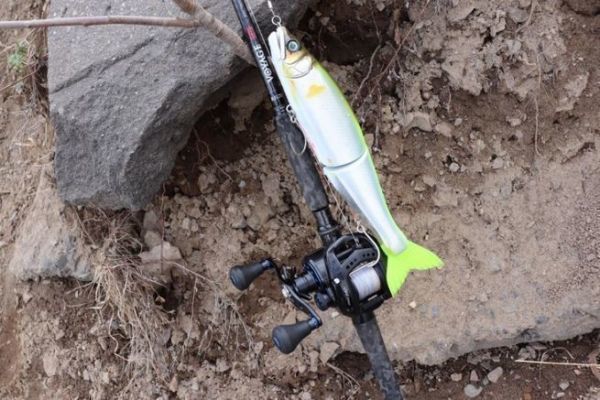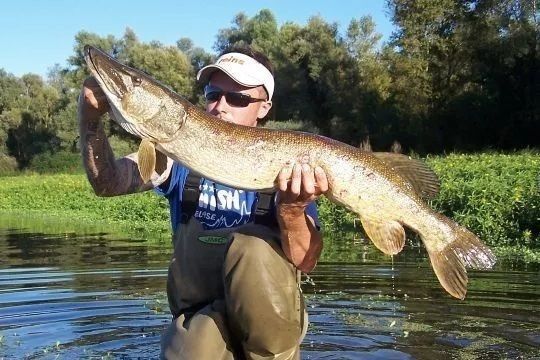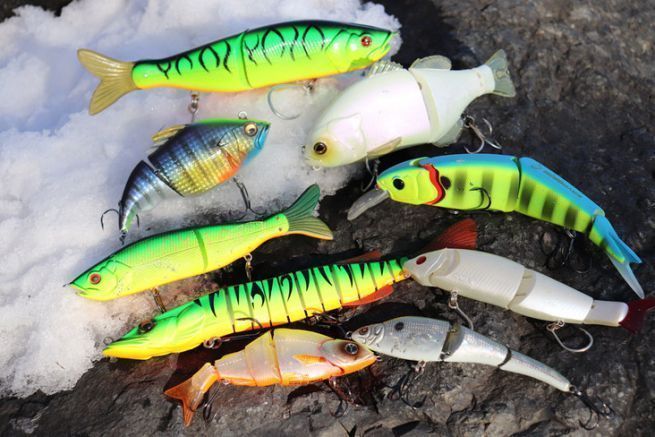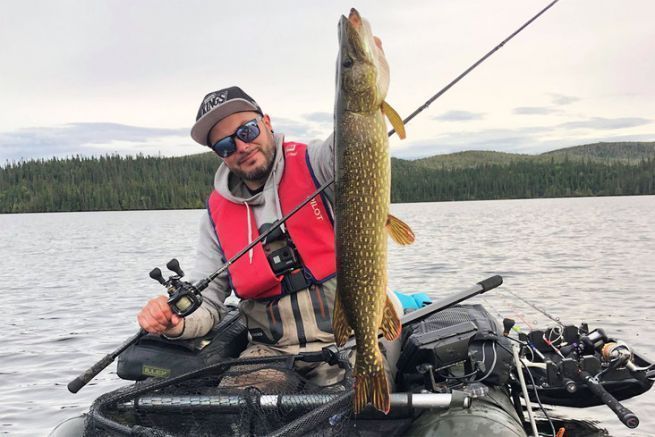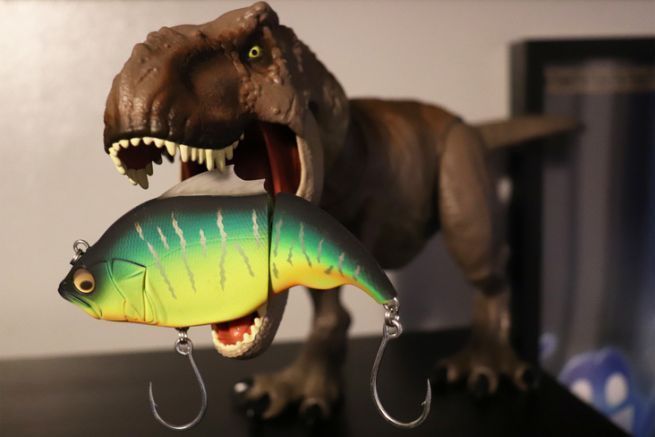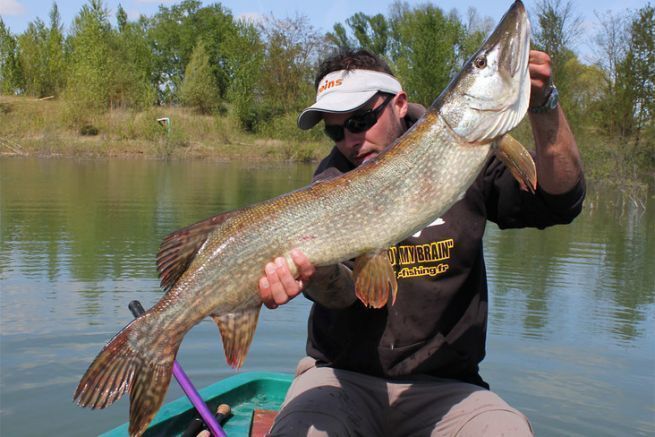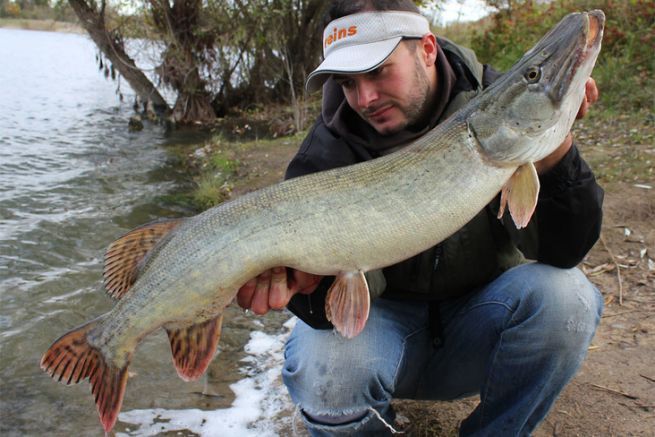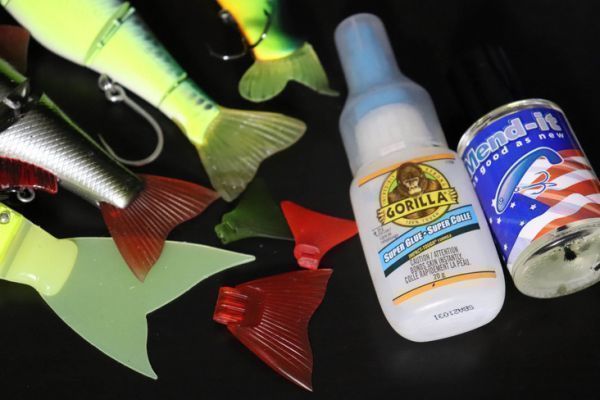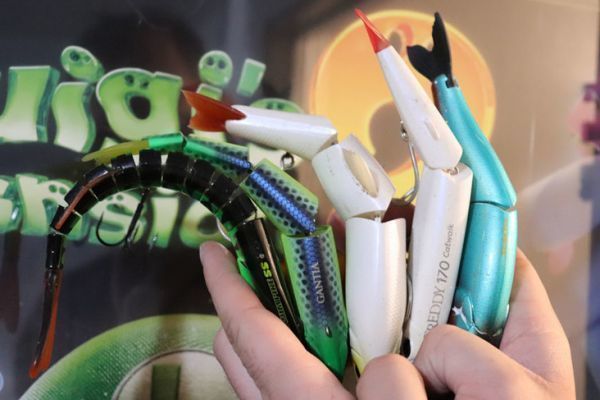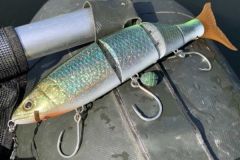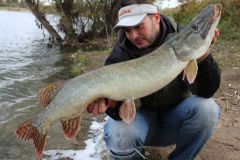A powerful rod
The rod must be capable of casting at least 230 grams, or about 8 oz, depending on the unit used, to start entering the giant bait range. Given the weights to be propelled, a casting model is highly recommended, for the comfort it provides and the ease with which it can cast large lures. A length of 220 centimetres coupled with a medium fast or fast action is often what you'll find.
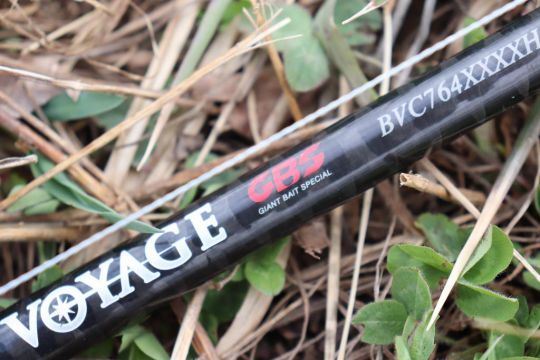
Given the weight of the lures, the fast action is more likely to turn into medium fast during the casting phase. It's important to use a long rod, because a rod that's too short, like a jerkbait, won't bend enough when casting, and will be unpleasant and inaccurate.
Some references:
- Tenryu Injection BC 85 XXH
- Bone Voyage BVC 764 XXXXH
- Deps Huge Custom Genoma HG3-65F
A reel with brakes
To accompany this powerful rod, you need an equally powerful casting reel. A size 300 reel will meet this need and bring balance to the package. The important thing is that this reel must have a spool brake capable of meeting the needs of casting a heavy lure, a fighting brake of at least 6 kg, and a medium-to-fast ratio of around 85 cm per crank revolution.
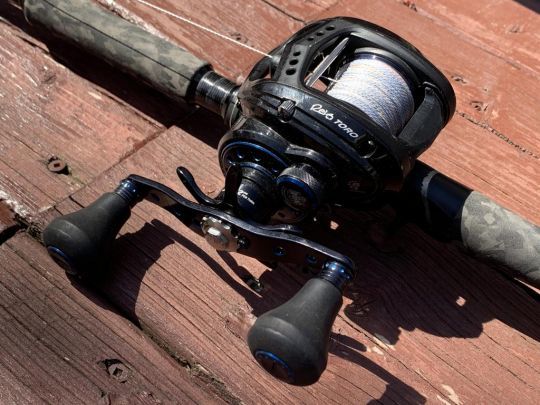
Because yes, even if most of the time you fish gently with big lures, sometimes you have to be able to bring in the fish quickly, especially with lures that have a tight stroke.
Some references:
A sturdy braid
As far as braid is concerned, an 8-strand model with a strength of 60 to 80 pounds is suggested. This may seem disproportionate for pike fishing, but when compared with the material used, it's quite adequate.
Several situations confirm the high braid resistance to be used, such as a big pike that catches in the last few meters or to resist more if the reel forms a wig, and not break the line.
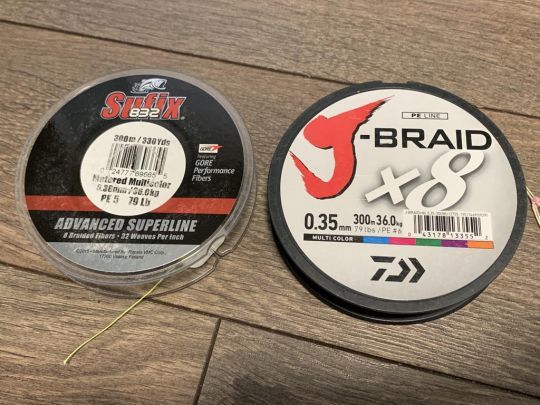
What's more, using a large diameter allows you to fill the reel without having to resort to backing, and in any case, since we're using casting sets, the diameter of the braid doesn't change the casting distances achieved, and besides, large braid makes casting easier.
Finally, if you use a large fluorocarbon leader, you can tie a connecting knot directly between a large braid and a large leader, without having to use intermediate diameters and therefore additional knots.
While nylon can be used for lures weighing from 60 to 140 grams, I don't recommend it for heavier lures, as the diameter would have to be increased and this would become unpleasant to use.
An unbreakable leader
Finally, the most critical point, as always with pike and its teeth, is the leader. Here too, it's important not to skimp, and to think solidly! On the one hand, to withstand the repeated throws of a heavy lure, on the other, to fight big pike with confidence.
There are two ways to make a leader, although I recommend one more than the other.
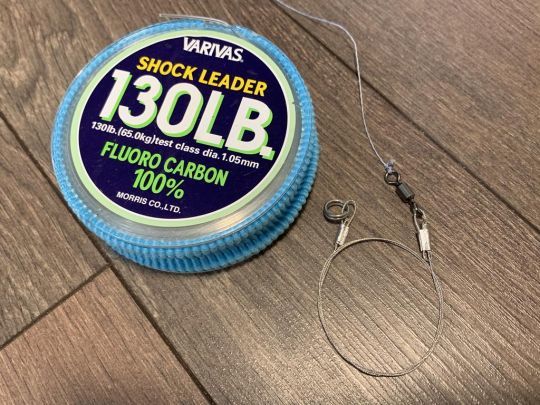
The first way to make your leader is to use 100 or 120/100 fluorocarbon. However, even with this large diameter, the risk of cutting, even if small, still exists, and the rigidity of such fluorocarbon can impair the lure's swimming action.
The second method is to use a steel leader, in 50 lb and over. The big advantage of this leader is that it protects from cuts and retains a certain flexibility, which hinders the lure's swimming less than a large fluorocarbon.
In both cases, the leader must be fitted with a rolling swivel and a broken ring. The swivel prevents the line from twisting and is placed between the line body and the leader, or directly at the end of the leader if a knot is used to connect it to the line body.
The broken ring is found at the very end of the leader, as this is where the lure is attached. A 60- or 80-pound model is ideal for this type of lure.
It's not complicated to choose a set for fishing with giant baits, in fact it's very similar to other casting techniques. What's different is that you have to oversize everything.

 /
/ 